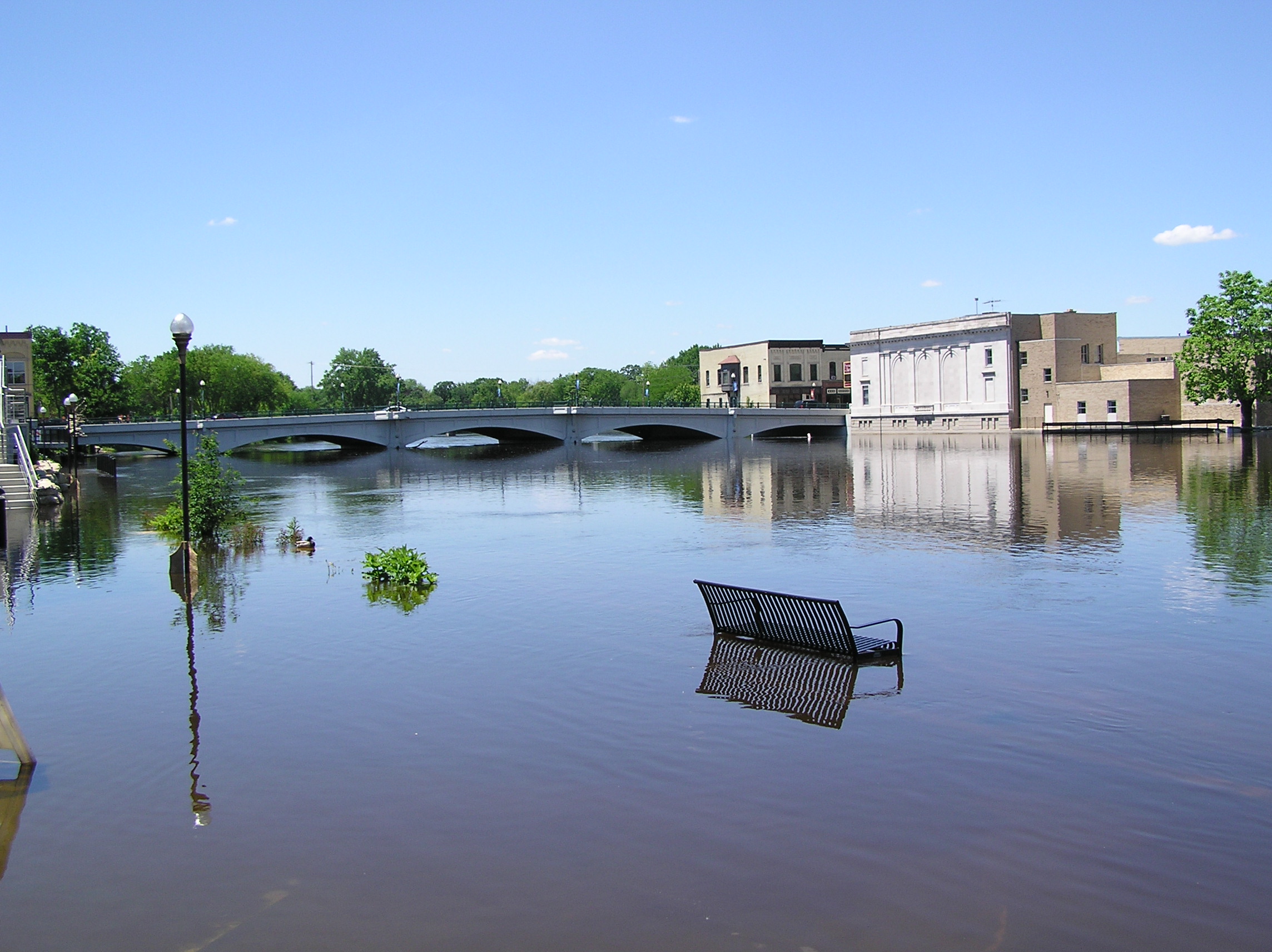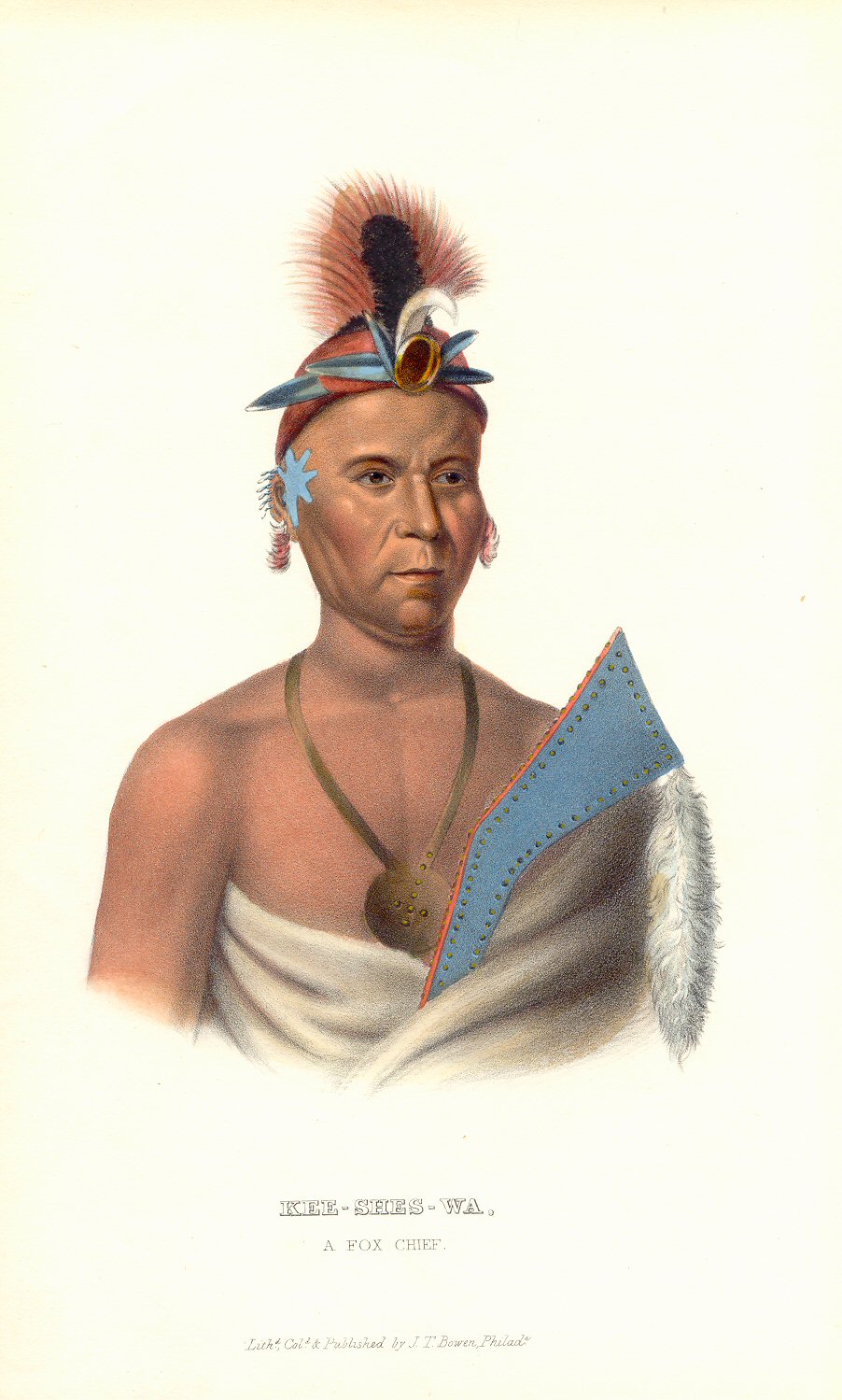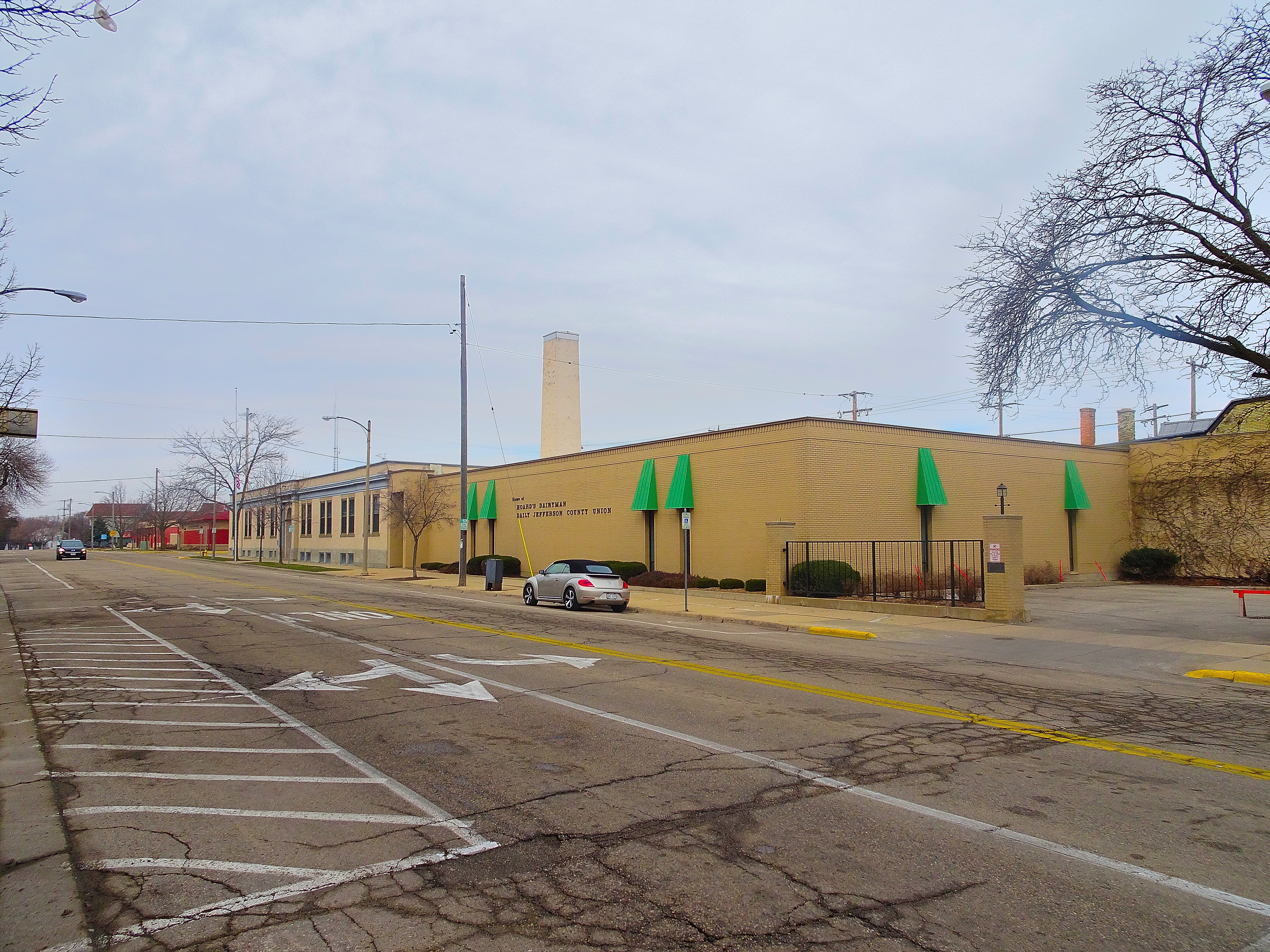|
Fort Atkinson, Wisconsin
Fort Atkinson is a city in Jefferson County, Wisconsin, United States. It is on the Rock River, a few miles upstream from Lake Koshkonong. The population was 12,579 at the 2020 census. Fort Atkinson is the largest city located entirely in Jefferson County, as Watertown is split between Jefferson and Dodge Counties. History Fort Atkinson was named after General Henry Atkinson, the commander of U.S. forces in the area during the Black Hawk War (1832) against a mixed band of Sauk, Meskwaki and Kickapoo peoples. The city developed at the site of Fort Koshkonong, which was used during that war. A replica of the original 1832 stockade has been built just outside town, although not at the original site. The fort was located to control the confluence of the Rock and Bark rivers. The settlement grew rapidly in the mid-19th century, after the migration of pioneers from the east, especially New York State and the northern tier. They were among the many migrants carrying New England Ya ... [...More Info...] [...Related Items...] OR: [Wikipedia] [Google] [Baidu] |
City
A city is a human settlement of notable size.Goodall, B. (1987) ''The Penguin Dictionary of Human Geography''. London: Penguin.Kuper, A. and Kuper, J., eds (1996) ''The Social Science Encyclopedia''. 2nd edition. London: Routledge. It can be defined as a permanent and densely settled place with administratively defined boundaries whose members work primarily on non-agricultural tasks. Cities generally have extensive systems for housing, transportation, sanitation, utilities, land use, production of goods, and communication. Their density facilitates interaction between people, government organisations and businesses, sometimes benefiting different parties in the process, such as improving efficiency of goods and service distribution. Historically, city-dwellers have been a small proportion of humanity overall, but following two centuries of unprecedented and rapid urbanization, more than half of the world population now lives in cities, which has had profound consequ ... [...More Info...] [...Related Items...] OR: [Wikipedia] [Google] [Baidu] |
Meskwaki
The Meskwaki (sometimes spelled Mesquaki), also known by the European exonyms Fox Indians or the Fox, are a Native American people. They have been closely linked to the Sauk people of the same language family. In the Meskwaki language, the Meskwaki call themselves ', which means "the Red-Earths", related to their creation story. Historically their homelands were in the Great Lakes region. The tribe coalesced in the St. Lawrence River Valley in present-day Ontario, Canada. Under French colonial pressures, it migrated to the southern side of the Great Lakes to territory that much later was organized by European Americans as the states of Michigan, Wisconsin, Illinois, and Iowa. The Meskwaki suffered damaging wars with the French and their Native American allies in the early 18th century, with one in 1730 decimating the tribe. Euro-American colonization and settlement proceeded in the United States during the 19th century and forced the Meskwaki/Fox south and west into the tal ... [...More Info...] [...Related Items...] OR: [Wikipedia] [Google] [Baidu] |
Intaglio (burial Mound)
In North American archaeology, intaglio () is a term from art applied to burial mounds that refers to a design cut into a hard surface. In this case, the burial mounds have designs cut into the ground, though ''intaglio'' broadly applies to burial mounds which are raised above the natural surface of the terrain. There are much more rare forms where they are left as indents below the natural terrain. These are typically in some effigy shape such as the Panther Intaglio Effigy Mound, which can be seen in Fort Atkinson, Wisconsin, where it is the last remaining intaglio mound in the state. References See also * Blythe Intaglios * Geoglyph * Nazca Lines (famous example) Types of monuments and memorials Italian words and phrases Archaeology of the United States {{archaeology-stub ... [...More Info...] [...Related Items...] OR: [Wikipedia] [Google] [Baidu] |
Aztalan State Park
Aztalan State Park is a Wisconsin state park in the Town of Aztalan, Jefferson County. Established in 1952, it was designated a National Historic Landmark in 1964 and added to the National Register of Historic Places in 1966. The park covers along the Crawfish River. Aztalan is the site of an ancient Mississippian culture settlement that flourished during the 10th to 13th centuries. The indigenous people constructed massive earthwork mounds for religious and political purposes. They were part of a widespread culture with important settlements throughout the Mississippi River valley and its tributaries. Their trading network extended from the Great Lakes to the Gulf Coast, and into the Southeast of the present-day United States. Pre-history (900–1300) Aztalan was first settled around 900 CE by a Native American culture known as the Middle Mississippian tradition. The chief center of a Middle Mississippian settlement is at Cahokia, in present-day Illinois, a city that at ... [...More Info...] [...Related Items...] OR: [Wikipedia] [Google] [Baidu] |
Native Americans In The United States
Native Americans, also known as American Indians, First Americans, Indigenous Americans, and other terms, are the Indigenous peoples of the mainland United States (Indigenous peoples of Hawaii, Alaska and territories of the United States are generally known by other terms). There are 574 federally recognized tribes living within the US, about half of which are associated with Indian reservations. As defined by the United States Census, "Native Americans" are Indigenous tribes that are originally from the contiguous United States, along with Alaska Natives. Indigenous peoples of the United States who are not listed as American Indian or Alaska Native include Native Hawaiians, Samoan Americans, and the Chamorro people. The US Census groups these peoples as " Native Hawaiian and other Pacific Islanders". European colonization of the Americas, which began in 1492, resulted in a precipitous decline in Native American population because of new diseases, wars, ethnic cleansin ... [...More Info...] [...Related Items...] OR: [Wikipedia] [Google] [Baidu] |
Hoard's Dairyman
''Hoards Dairyman'' is an American agricultural trade publication that focuses on dairy farming. It was founded in 1885 by William D. Hoard as a supplement to the ''Jefferson County Union'' and is published in Fort Atkinson, Wisconsin. History The ''Dairyman'' was founded in 1885 in Fort Atkinson, Wisconsin, by William D. Hoard as an expansion of regular agriculture columns he wrote in the ''Jefferson County Union''. It began as a four-page folio supplement to the ''Union'' and became a wholly separate publication in 1889. The publication grew rapidly, rising from 700 subscriptions to the folio in its first year to more than 6,000 subscriptions by 1889. Hoard used the magazine to advocate for new agricultural techniques, including the use of alfalfa as cattle feed, the use of silos to store silage, and the use of the Babcock test to measure the level of butterfat in milk. Advocacy for the use of silos had particular success; by 1925, one-fourth of all silos in the United ... [...More Info...] [...Related Items...] OR: [Wikipedia] [Google] [Baidu] |
William Dempster Hoard
William Dempster Hoard (October 10, 1836November 22, 1918) was an American politician, newspaper publisher, and agriculture advocate who served as the 16th governor of Wisconsin from 1889 to 1891. Hoard is called the "father of modern dairying"; his advocacy for scientific agriculture and the expansion of dairy farming has been credited with changing Wisconsin's agricultural economy. Hoard's promotion of the use of silos and alfalfa for cattle feed, testing for bovine tuberculosis, and single-use cattle herds in his magazine ''Hoard's Dairyman'' led to those practices becoming commonplace throughout the United States. His work with the Wisconsin Dairymen's Association led to the exporting of Wisconsin dairy products to the East Coast and national renown for them. As editor of his newspaper the ''Jefferson County Union'', Hoard was one the first county news editors to expand his coverage through the use of local correspondents and to include a strongly voiced editorial page in ... [...More Info...] [...Related Items...] OR: [Wikipedia] [Google] [Baidu] |
National Dairy Shrine
The National Dairy Shrine is an American dairying group founded in 1949 and based in Wisconsin. The shrine promotes the dairy industry and records its history. As of 2007, the organization had over 18,000 members from most facets of dairying. It holds an annual ceremony where it inducts members of the dairy industry into its hall of fame. Hoard Historical Museum The National Dairy Shrine's museum is located in Fort Atkinson, Wisconsin. It shares a visitor center with the Hoard Historical Museum, which was William D. Hoard's house. Hoard, Wisconsin's 16th governor, was a prominent dairy advocate though his weekly publication, ''Hoard's Dairyman''. The National Dairy Shrine's museum contains exhibits about the history of dairying. Dairying objects in its collection include butter churns, milking machines, a treadle, and items used in the Babcock test for fat content of milk, which was developed nearby at the University of Wisconsin–Madison. The Hoard Historical Museum focuses ... [...More Info...] [...Related Items...] OR: [Wikipedia] [Google] [Baidu] |
Four British Folkways In America
4 (four) is a number, numeral and digit. It is the natural number following 3 and preceding 5. It is the smallest semiprime and composite number, and is considered unlucky in many East Asian cultures. In mathematics Four is the smallest composite number, its proper divisors being and . Four is the sum and product of two with itself: 2 + 2 = 4 = 2 x 2, the only number b such that a + a = b = a x a, which also makes four the smallest squared prime number p^. In Knuth's up-arrow notation, , and so forth, for any number of up arrows. By consequence, four is the only square one more than a prime number, specifically three. The sum of the first four prime numbers two + three + five + seven is the only sum of four consecutive prime numbers that yields an odd prime number, seventeen, which is the fourth super-prime. Four lies between the first proper pair of twin primes, three and five, which are the first two Fermat primes, like seventeen, which is the third. On the other ha ... [...More Info...] [...Related Items...] OR: [Wikipedia] [Google] [Baidu] |
David Hackett Fischer
David Hackett Fischer (born December 2, 1935) is University Professor of History Emeritus at Brandeis University. Fischer's major works have covered topics ranging from large macroeconomic and cultural trends (''Albion's Seed,'' ''The Great Wave'') to narrative histories of significant events (''Paul Revere's Ride,'' ''Washington's Crossing'') to explorations of historiography (''Historians' Fallacies'', in which he coined the term "historian's fallacy"). Education Fischer grew up in Baltimore, Maryland. He received an A.B. from Princeton University in 1958 and a Ph.D. from Johns Hopkins University in 1962. Career Fischer has been on the faculty of Brandeis University for 50 years, where he is known for being interested in his students and history. He is best known for two major works: ''Albion's Seed'' (1989), and '' Washington's Crossing (Pivotal Moments in American History)'' (2004). In ''Albion's Seed'', he argues that core aspects of American culture stem from four British ... [...More Info...] [...Related Items...] OR: [Wikipedia] [Google] [Baidu] |
Bark River (Rock River)
The Bark River is a tributary of the Rock River, about long,U.S. Geological Survey. National Hydrography Dataset high-resolution flowline dataThe National Map, accessed May 13, 2011 in southeastern Wisconsin in the United States. Via the Rock River, it is part of the watershed of the Mississippi River. According to the Geographic Names Information System, it has also been known historically as the "Peelbark River". The Bark River rises in southern Washington County at Bark Lake In Richfield, WI and flows generally southwestwardly through Waukesha and Jefferson counties, past the communities of Hartland, Delafield, Summit Dousman and Rome, and through several small lakes. It joins the Rock River in Jefferson County just east of Fort Atkinson. In Jefferson County the Bark River collects the Scuppernong River. See also *List of Wisconsin rivers References Columbia Gazetteer of North America entry*DeLorme DeLorme is the producer of personal satellite tracking, messagin ... [...More Info...] [...Related Items...] OR: [Wikipedia] [Google] [Baidu] |







